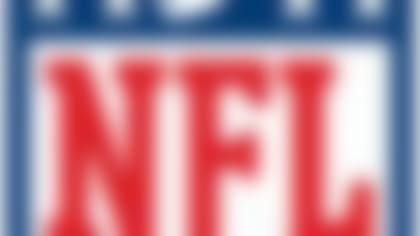The announcement Wednesday morning slipped in under cover of the news around DeSean Jackson. The New York Giants had signed defensive end Robert Ayers -- the 13th veteran added by the team in the three weeks since free agency began. In that way, it was a day like many others this spring. The Giants have the numbers, one of their rivals grabbed the headlines and the NFC East underwent another nip and tuck in what has amounted to Extreme Makeover: Roster Edition.
Jackson's move from Philadelphia to Washington, D.C., this week is one of the most compelling in the NFL's dizzying free-agency period, because of the too-close-for-comfort questions it raises about why the Eagles released him, what the Redskins see in him and how the notably emotional player will calibrate revenge in his preparations. But the volatility of Jackson's past week is merely a microcosm of the unusual upheaval that has gripped and reshaped the once-staid division, which for long stretches last season featured play so mediocre it seemed unlikely the eventual champion would sport a winning record.
Free-Agent Tracker

Follow all the developments on the NFL's open market with our up-to-the-minute tracking of 2014's free agents. **More...**
In the end, Philadelphia did at 10-6, but Jackson's shocking release signaled that the status quo was not acceptable even to those that had reached the playoffs, to say nothing of those that had fallen short. The Eagles shed one of their most dangerous offensive weapons shortly after acquiring a tantalizing new one (running back Darren Sproles). The Redskins changed the team's braintrust, tinkered with the offensive line and transformed Robert Griffin III's cast of targets, adding Jackson and Andre Roberts. The Cowboys, desperate to improve their sieve of a defense, signed Henry Melton -- after losing two starting defensive linemen in DeMarcus Ware and Jason Hatcher (he went to Washington, too). The Giants, often one of the most conservative free-agency players, have been the league's most active this spring, particularly with regard to former Broncos (they've added three so far). Just four players remain from the Giants team that won Super Bowl XLII in 2008.
"Necessary, obviously," Giants coach Tom Coughlin said of the overhaul last week at the NFL Annual Meeting. "Just look at our team and the nature of our team and the number of people who were free agents. And then, the obvious: When you evaluate a team, you have needs, so you have to go out and try to do something in whatever way is possible, first (in) free agency, to try to solve some of your issues. We've done that ... It's change, it's part of the game. The challenge is, can you get back as fast as you can to the team that you want to be?"
None of the teams were what they wanted to be in 2013, with the Eagles having to beat the Cowboyson the final day of the regular season to secure the division title before losing at home to the New Orleans Saints in the wild-card round of the playoffs.
But, other than the names on the backs of the jerseys, has anything really changed? Did Jackson's ride down I-95 -- or the Giants adding the equivalent of one-quarter of a 53-man roster -- shift the balance of power?
Yes, it probably did.
"I think the thing just got a lot closer," said NFL Network analyst Charley Casserly, the former general manager of the Redskins and Houston Texans.
Casserly's assessment was echoed by two current NFL team personnel executives who looked at the divisional landscape and saw it morphing into one that figures to be better in relation to the rest of the league (the NFC East was a woeful 5-11 against non-conference opponents in 2013) but also more competitive internally. The big mover: the Redskins, who were 3-13 last season, but who have undergone an overhaul beginning with the firing of coach Mike Shanahan and continuing with the vesting of general manager Bruce Allen with final say over the roster, the hiring of Jay Gruden as Shanahan's replacement, the expected renewed health of RGIII and the signing of Jackson.
Silver: Daniel Snyder's major coup

The Jackson move alone could account for a portion of the narrowing of the gap between worst and first. While the Eagles' decision to part with the receiver has become the lightning rod of their offseason, the team does have other issues -- namely, a shaky defense. When Casserly was asked who he thought was the best team in the division right now, he paused for several long seconds before naming Washington. Yes, the Redskins collapsed into last place last season -- but they also made a series of promising moves, like adding an interior pass rusher in Hatcher, plus a new left guard, three inside linebackers and safety Ryan Clark, even before landing Jackson.
"DeSean is a huge loss," Casserly said. "Basically, you made a trade: DeSean Jackson for Jeremy Maclin and Darren Sproles. Maclin is not as good as DeSean -- you don't think of double-covering Maclin. You have to have a plan for DeSean Jackson. You build your game plan partly around him. Philadelphia had to beat Dallas to win the title, so they didn't run away with it."
The Redskins, of course, still have significant concerns on the offensive line and in the secondary. But the projected tightening of the division is about more than one team.
The Giants, reacting to a 7-9 campaign in which they missed the playoffs for the second straight year after winning the Super Bowl in the 2011 season, have loaded up on players, many of whom came at reasonable rates and will provide depth. Cornerback Dominique Rodgers-Cromartie was the most high-profile signing and perhaps the riskiest, because of his uneven playing history. If he plays well, the Giants will have solved a significant problem; if he doesn't, they'll have created one instead. But while much of the attention now falls on receivers as possible targets for the Giants' draft, their free-agency shopping has had a particular focus: Among the 13 veterans brought aboard from other teams and those of their own they chose to re-sign, four are former first-round picks (Ayers, Rodgers-Cromartie, Jon Beason and Mike Patterson).
"A lot of these signings are not a lot of money," Casserly said. "They are (meant to provide roster) competition. There's nothing wrong with that -- sometime in there, you'll hit something. There's nothing wrong with that strategy. At some point, there is reason to think these guys are good. It's low risk."
Speaking of risk, the biggest in the division right now might be in Dallas, which signed Melton and Jeremy Mincey to improve a terrible defense while also losing Ware and Hatcher. The Cowboys are now in danger of falling out of the familiar perch they've occupied the past three seasons: as the final-day regular-season opponent in the game that decides the division championship. Three years in a row, the Cowboys have lost that game to the eventual champion. But because of a salary-cap crunch, the Cowboys have been largely unable to pursue the caliber of player their rivals have, furthering the impression that Dallas -- after three straight 8-8 finishes -- is stuck in neutral while every team around it undergoes a tune-up.
"You had the worst defense in football with DeMarcus Ware, now they have the worst defense in football withoutDeMarcus Ware," Casserly said. "There is a lot of work still to be done."
No team wins a title in the offseason, but much can be lost. And in the most frenetic division race of the spring, the work has never really ended.
Follow Judy Battista on Twitter @judybattista.












